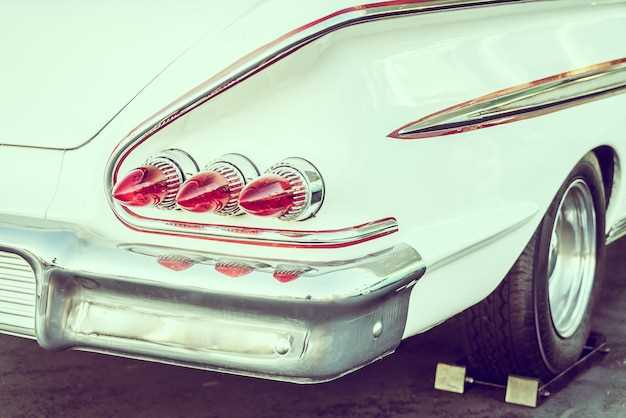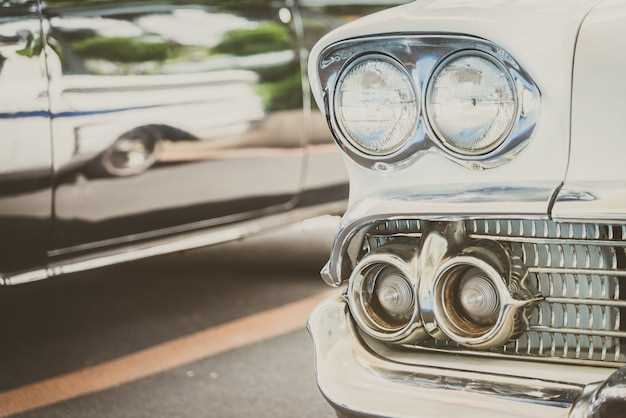
The story of American muscle cars is a captivating journey through the world of automotive innovation, raw power, and cultural significance. Emerging in the 1960s, these vehicles quickly established themselves as icons of American automotive heritage, symbolizing freedom and individuality. Their powerful engines, aggressive designs, and performance-oriented features made them the ultimate expression of American engineering prowess. Muscle cars like the Ford Mustang, Chevrolet Camaro, and Dodge Charger not only redefined speed but also reshaped the identity of car enthusiasts across the nation.
As we delve into the historical context, it becomes clear that American muscle cars were born during a time of social change and rebellion. The post-war era was marked by a growing reliance on consumer products, with young drivers seeking vehicles that mirrored their aspirations and desires for adventure. This era gave rise to a car culture that valued performance and style, leading to a unique segment of the automotive market where muscle cars thrived. The synthesis of powerful V8 engines with lightweight, aerodynamic bodies gave these cars their signature roar and unmatched acceleration.
Today, the influence of American muscle cars extends far beyond their original heyday. As modern manufacturers continue to draw inspiration from these classics, the legacy of muscle cars lives on in contemporary designs that honor their predecessors while integrating modern technology. The enduring popularity of muscle cars at car shows, movies, and in popular culture reflects their lasting impact and significance in the automotive landscape. They remain a testament to a time when the thrill of driving was as important as the cars themselves, ensuring that the heritage of American muscle continues to inspire future generations of car enthusiasts.
Key Models That Defined the Muscle Car Era

The muscle car era, which flourished primarily in the late 1960s and early 1970s, introduced a collection of powerful vehicles that became icons of American automotive culture. These cars not only provided exhilarating performance but also embodied the spirit of freedom and rebellion that characterized the era.
One of the most iconic models is the Pontiac GTO, often regarded as the original muscle car. Launched in 1964, it combined a lightweight body with a potent V8 engine, setting a standard for future performance vehicles. The GTO’s success catalyzed the muscle car phenomenon, inspiring manufacturers to produce their high-powered versions.
Another significant entry in this lineage is the Ford Mustang, introduced in 1964. The Mustang created a new segment in the automotive market, appealing to a younger demographic. Its blend of style, speed, and affordability helped establish it as a beloved icon, influencing countless designs that followed.
The Chevrolet Camaro debuted in 1966 as a direct competitor to the Mustang. With its aggressive styling and wide range of powerful engine options, the Camaro became a relevant player in the muscle car arena. Its legacy continues today, celebrating a heritage rich with performance and passion.
Dodge also made its mark with the Charger, particularly the 1969 model that showcased bold design and fearless power. The Charger represented the merging of performance with a strong visual presence, resonating with enthusiasts who appreciated both speed and style.
Lastly, the Plymouth Barracuda, released in 1964, is noteworthy for its role in muscle car history. Although often overlooked, the Barracuda’s introduction of the fastback design and high-performance variants added to the diversity of the genre, contributing to the legacy of American muscle cars.
These key models not only defined the muscle car era but also left a lasting influence on automotive design and culture, sealing their place in the heritage of American automobiles.
How Muscle Cars Shaped American Automotive Culture

Muscle cars emerged in the 1960s as a distinct category of high-performance vehicles, reflecting the burgeoning youth culture and desire for speed and power. These cars, characterized by their large engines and aggressive styling, became symbols of freedom and rebellion in post-war America. The introduction of models like the Ford Mustang, Chevrolet Camaro, and Dodge Charger resonated deeply with a generation seeking excitement on the open road.
The phenomenon of muscle cars extended beyond mere transportation; they became integral to American identity. The raw power and distinctive aesthetics attracted a loyal following, spawning a culture centered around car shows, drag racing, and a sense of community among enthusiasts. This passion for performance led to the creation of aftermarket modifications, making car personalization a significant part of the automotive landscape.
As muscle cars gained popularity, they influenced manufacturing practices and marketing strategies within the auto industry. Automakers recognized the appeal of speed and style, prompting a wave of competition to produce even more powerful and stylish vehicles. This rivalry not only drove technological advancements but also reshaped consumer expectations, establishing performance as a key selling point for cars.
In addition to their impact on automotive design, muscle cars played a significant role in American pop culture. Their appearances in films and television reinforced their status as icons of the era, embodying the thrill of the American dream. The muscle car aesthetic and lifestyle have continued to inspire generations, further embedding these vehicles in the cultural fabric of the nation.
Today, the legacy of muscle cars endures, influencing modern automotive trends and fostering a renewed appreciation for classic performance vehicles. The blend of nostalgia and admiration for these powerful machines demonstrates their lasting impact on American automotive culture, making them timeless symbols of speed, freedom, and individuality.
Impact of Muscle Car Legacy on Modern Performance Vehicles
The legacy of muscle cars has profoundly shaped the landscape of modern performance vehicles, influencing both design and engineering philosophies. Originally characterized by their powerful V8 engines and aggressive styling, muscle cars established a benchmark for power and speed that has paved the way for advancements in today’s automotive industry.
One significant impact is the enduring emphasis on performance. Modern performance cars often draw inspiration from the raw horsepower and torque of classic muscle cars, ensuring that driving enthusiasts experience adrenaline-pumping acceleration. Manufacturers have adopted light-weight materials and advanced engine technologies to replicate and enhance the exhilarating driving experience that muscle cars are known for.
Technology and Innovation play crucial roles in this evolution. While classic muscle cars relied heavily on naturally aspirated engines, contemporary performance vehicles often incorporate turbocharging and supercharging techniques to boost power output without compromising fuel efficiency. This shift allows for a balance between thrilling performance and environmental responsibility, a consideration largely absent in the muscle car era.
Design elements from muscle cars are also evident in modern vehicles. Features such as muscular stances, aggressive lines, and striking color palettes pay homage to the iconic designs of the past. Current manufacturers utilize these aesthetic cues to attract a new generation of drivers who appreciate both style and performance, ensuring that the muscle car spirit remains alive in contemporary form.
Finally, the muscle car culture has fostered a community of enthusiasts that persists today. The passion for high-performance vehicles remains strong, inspiring manufacturers to create models that resonate with consumers seeking power, speed, and nostalgia. Collector markets and automotive events celebrate muscle car history and influence, creating a bridge between past and present.
In conclusion, the impact of muscle car legacy on modern performance vehicles is undeniable. From engineering advancements to design aesthetics and community engagement, the essence of muscle cars continues to drive innovation and passion in the automotive world.




